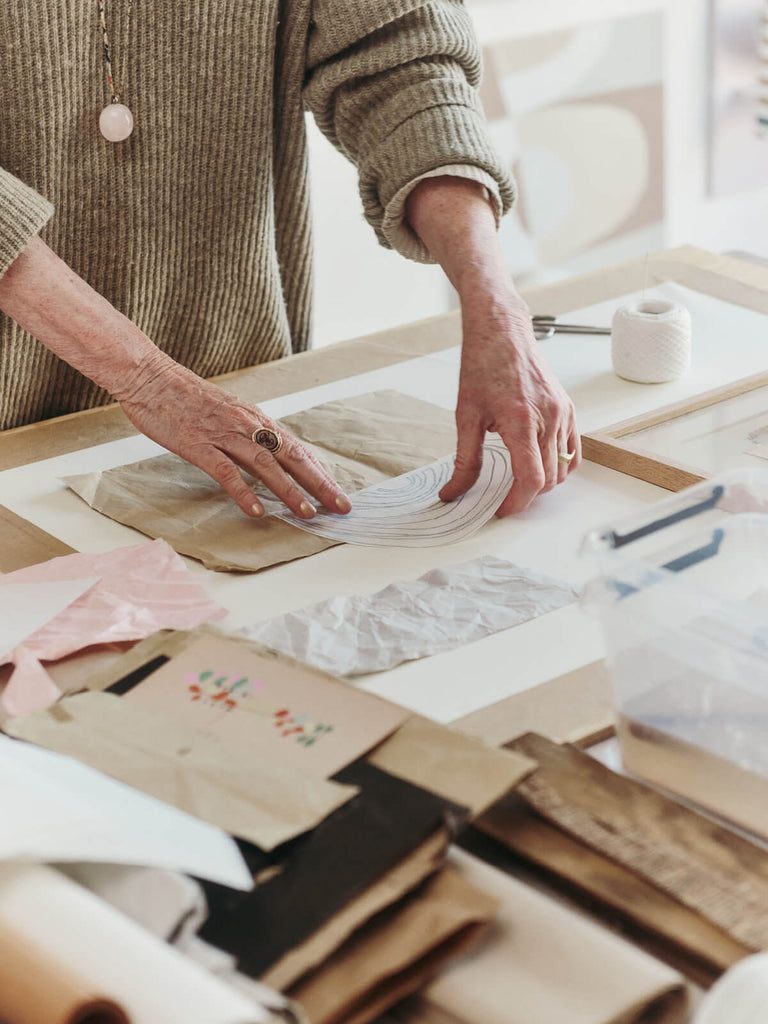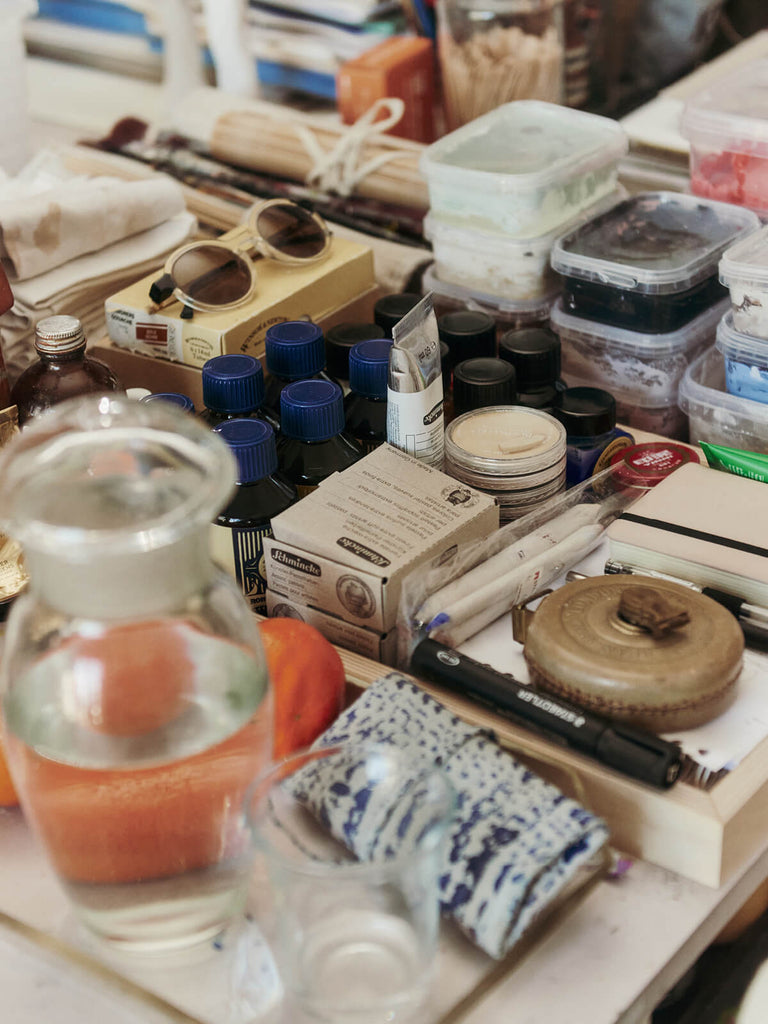Kids
Fantastical Friends
A visit to mixed media artist Leise Dich Abrahamsen’s Copenhagen studio was the starting point for Ferm Living’s collection of four decorative creatures that spark the imagination.
While visiting Leise Dich Abrahamsen’s colourful atelier in Frederiksberg, Ferm Living’s design team spotted a small papier-mâché creature on a shelf. With its sinuous form, five stubby legs and furrowed surface, to one onlooker it resembled a crocodile, to another a horse.
“The beauty of the collection is that each design is open to interpretation,” says Leise on her collaboration with Ferm Living — four papier-mâché creatures shaped with recognisable characteristics that have been combined in unconventional ways.

Leise Dich Abrahamsen, the Copenhagen-based artist, works primarily in painting and graphic art. Utilising an alphabet of universal symbols – e.g. a dot or a line – and recognisable shapes, her works have an air of the familiar and a sense of presence
“My studio is often a test bed for creative play,” she explains. “I had been working with a fun technique, shaping a series of creatures from papier-mâché before decorating each with hand-painted dots, splodges or stripes. It was fast and fun.”
The design team fell in love with Leise’s designs and wanted authentically to capture on a wider scale the intuitive, uncomplicated way she works with her hands, using simple materials and techniques to bring the creatures to life.
The creatures were never designed with a specific purpose or function – or even a specific animal – in mind. Instead, they were an artistic experiment:
“My intention was to create something appealing, fun and with an element of surprise about it. Something familiar yet enigmatic. Sometimes the ideas in my head need to take physical form. This was one of those times,” she adds.
Leise reworked the original proportions to a larger scale and handcrafted prototypes for moulds.
“We have worked in close collaboration with our partner in India to capture Leise’s sensibilities. It was important to us to retain the handmade feel of each piece,” explains Emma Cook from the design team.


At the factory in India, the moulds are filled with compressed papier-mâché pulp and once dry, patterns are painted by hand.
The use of papier-mâché gives the designs a raw, natural surface texture that draws out the subtle details and unique features of each, while hand-painting ensures no two pieces are the same. Each small addition or omission —an extra leg, an imperfect stripe or absent dot — adds to the sense of artisanry and the character of each piece.
“I really like imperfections. I’ve always used them in my work. If, say, I’ve spilled paint on a sheet of paper, I’ll use it to my advantage, incorporating it into the design. These creatures are purposefully imperfect,” notes Leise.

“My intention was to create something appealing, fun and with an element of surprise about it. Something familiar yet enigmatic. Sometimes the ideas in my head need to take physical form. This was one of those times.”
The decorative objects can stand together or alone in a child’s room, but can also adorn a shelf in a living room or a desk in an office. Their ambiguous forms invite conversation and play, activating the imagination with their whimsical look.
“While I see a series of fun and decorative creatures that remind me of objects I had as a child, in particular a figure from Japan that was simply magical, I like the fact that things don’t have to be so obvious. People can interpret these creatures in their own way, giving them a meaning and a context that is relevant to them,” Leise says.













